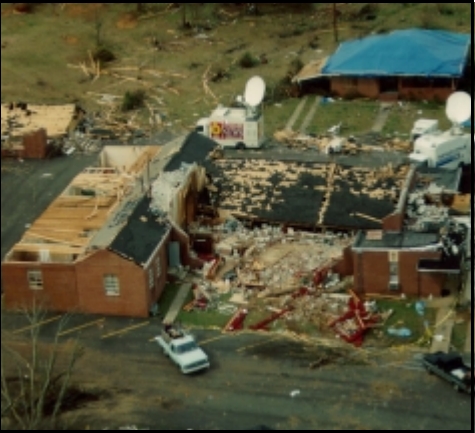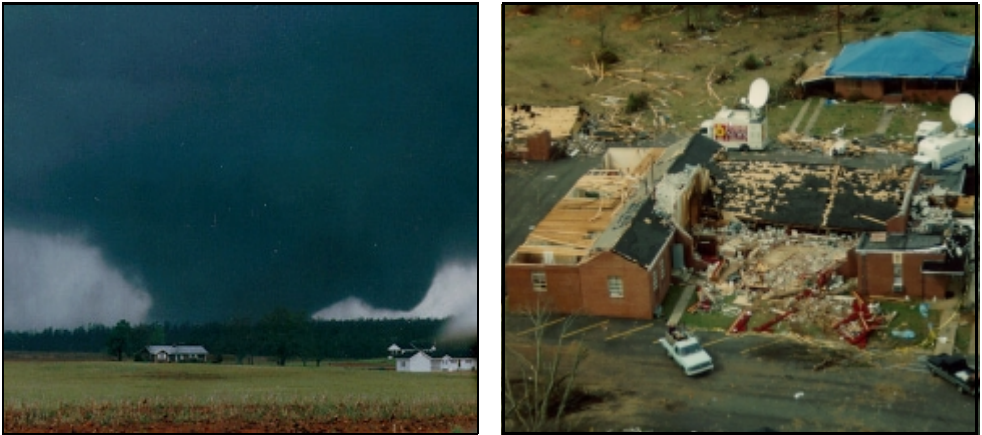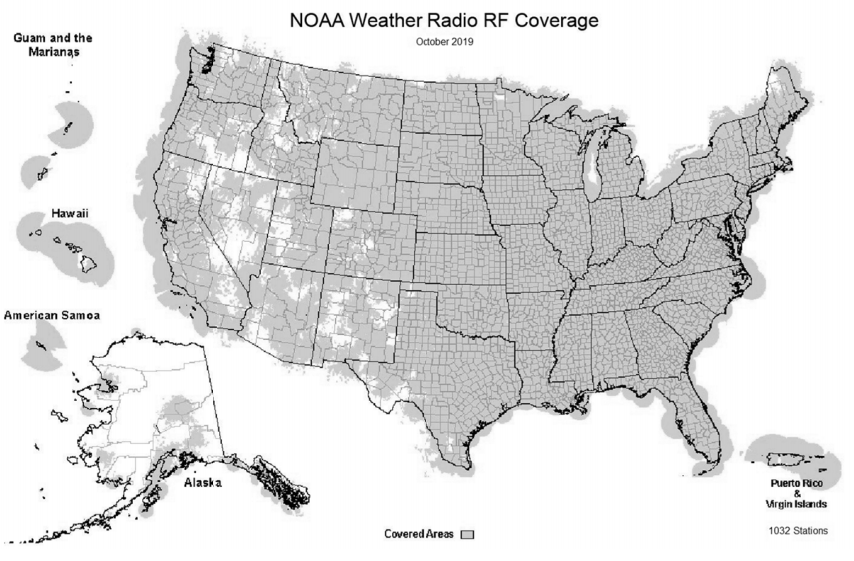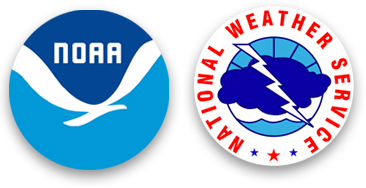Cooperative Expansion of NOAA Weather Radio - National Weather Service Heritage

Cooperative Expansion of NOAA Weather Radio
By Chris Geelhart (chris.geelhart@noaa.gov)The early seeds of NOAA Weather Radio were planted in the early 1950's, with experimental, aviation-related broadcasts for the New York City and Chicago areas. These initial stations were replaced by a separate network of stations on FAA low and medium-band frequencies as the decade continued, and the first stations were left needing a new mission. In 1960, marine broadcasts were tested and quickly became popular. In the Weather Bureau's assessment of the 1965 Palm Sunday tornado outbreak in the Midwest, there was a recommendation of a nationwide radio network to provide warnings to the public. This was reiterated in its Hurricane Camille assessment of 1969, which recommended transmitters along the East and Gulf Coasts.
Significant expansion of the NOAA Weather Radio network, which consisted of just 29 transmitters in fall 1970, has twice been aided by deadly tornado outbreaks. The first, the "Super Outbreak" of April 3-4, 1974, produced 148 tornadoes across 13 states, killing 330 people. The NWS, which previously had been slowly expanding the network by using funds previously requested for other programs, submitted a request in its fiscal year 1976 budget for $3,560,000 to complete the NWR network by 1979. It cited the Super Outbreak as a clear need for the new stations. In addition, the White House designated NWR in January 1975 as the "sole government-operated radio system" for disseminating messages of nuclear attack and follow-up instructions. Congress approved the budget request, and included funding in subsequent years. More than 100 transmitters were operating by summer 1976, and by 1985, there were just under 400 transmitters. The expansion required the network to add new broadcast frequencies to avoid interference.

Photos from the NWS's National Disaster Survey Report.
A second wave of NWR station expansion occurred following the Palm Sunday tornado outbreak of March 27, 1994, which impacted portions of Alabama, Georgia, Tennessee, and the Carolinas. The Goshen United Methodist Church in Piedmont, AL, was destroyed by a long-track tornado, with 150 people inside for Sunday services. While the Birmingham NWS office issued a tornado warning 12 minutes prior to the tornado striking the church, no NWR transmitter covered that area. A total of 20 fatalities and 90 injuries occurred at the church.
On March 30, Vice President Al Gore visited the site, and pledged to improve the NWR network in rural areas. He contacted NWS director Dr. Elbert "Joe" Friday to discuss ideas that day, and two weeks later, announced an initiative to utilize public-private partnerships to expand the NWR network to cover 95% of the population. Additionally, he pledged similar participation to increase the number of NWR receivers in homes and places where large groups of people gather, so that "they will soon be as common as smoke detectors."
The working group in charge of the "Gore Initiative," which involved members of the NWS, FEMA, and the U.S. Department of Agriculture, came up with several additional recommendations:
- Buy and install NWR receivers and all federal facilities within range of a transmitter.
- Include NWR receivers in new buildings.
- Encourage donations of receivers to public buildings such as schools, hospitals, and places of worship.
- Use the system to expand NWR to an "all-hazards" network.
The first of these new transmitters was installed at Fort Payne, AL, covering the area impacted by the Piedmont tornado. Network expansion involved cooperative work with rural electric cooperatives, telephone cooperatives, state and local emergency management agencies, universities, and public utilities. Agencies would work together to purchase the transmitters, find the best place to install them, and publicize the new stations. By 2002, the network had expanded to approximately 750 stations, and in 2008, the 1,000th transmitter was installed at Nenana, AK. As of 2019, there are a total of 1,032 transmitters in operation.

Resources and Additional Reading:
- NOAA Weather Radio homepage
- American Warning Dissemination and NOAA Weather Radio -- a history of NOAA Weather Radio by Cliff Nelson, presented as a Master's thesis at the University of North Carolina in 2002.
- Calvert, E. B., (1923), History of Radio in Relation to the Work of the Weather Bureau, Monthly Weather Review - ftp://ftp.library.noaa.gov/docs.lib/htdocs/rescue/mwr/051/mwr-051-01-0001.pdf
